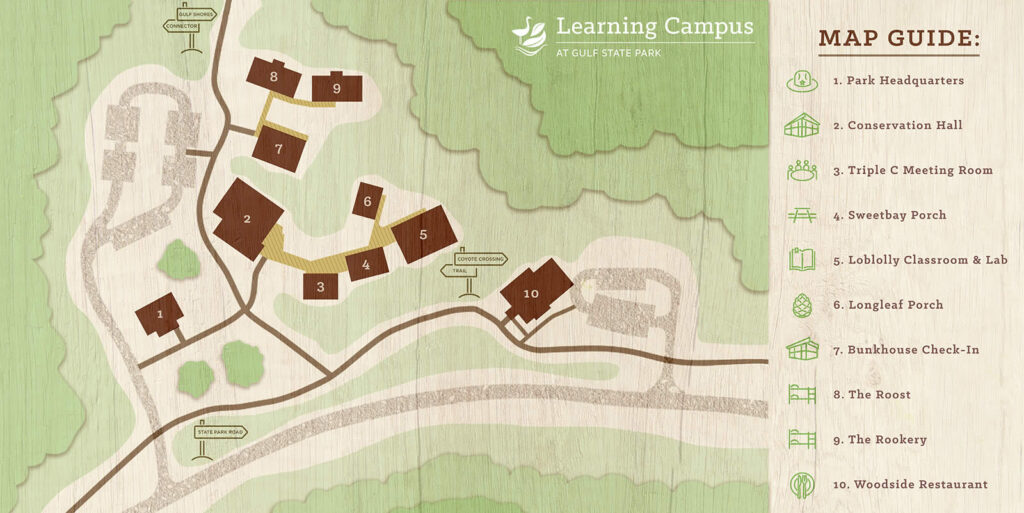The Learning Campus allows travelers to explore the Gulf State Park to the highest level. Our goal has always been to expand the public’s knowledge of the beauty of Alabama’s natural habitat and to preserve, develop, and protect the vibrant Gulf Shores ecosystems. We are proud to say that the Learning Campus symbolizes and embodies our mission for sustainability and environmental education.
The Gulf State Park encompasses 6,150 acres of unique landscape on the Gulf of Mexico and features nine diverse ecosystems to explore, including freshwater lakes, dunes, pine savannas, marshes, woodlands, and beaches. It is one of Alabama’s most popular attractions and draws more than 3 million annual visitors.
In 2014, the Gulf State Park Enhancement Project was launched to provide ecologically-sensitive enhancements to Gulf State Park. Determined to preserve the property and promote sustainable operations, money was allocated to rebuild the Lodge at Gulf State Park. In addition, construction began on the Learning Campus, Interpretive Center, and Woodside Restaurant.
The Learning Campus is the ideal base camp for immersive environmental learning and the modern bunk-style accommodations make it the perfect facility to host group events within the Gulf State Park. With so much to explore, the Learning Campus provides sleeping, meeting, dining, and educational accommodations to support and serve as a basecamp for groups of environmentally-conscious travelers.
Learn more about the state-of-the-art Learning Campus and what the newly enhanced Gulf State Park has to offer.
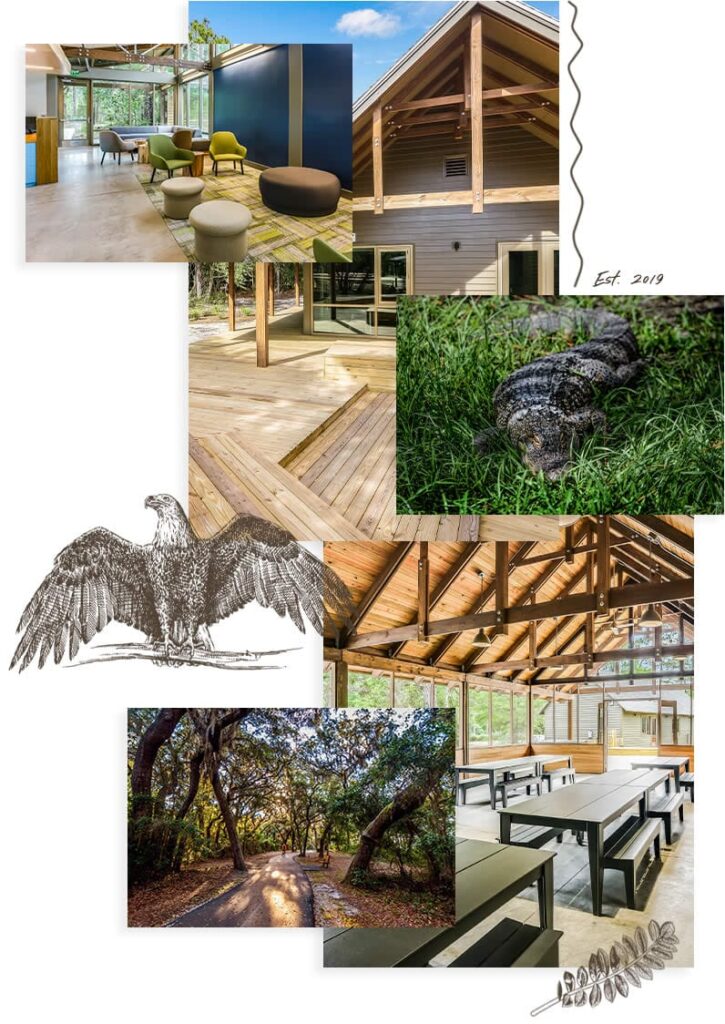
The Learning Campus contains a collection of buildings built on the historical site of the original barracks for the Civilian Conservation Corps. The meeting rooms serve a variety of purposes. For instance, Conservation Hall is ideal for large gatherings and video screenings for educational purposes while the Loblolly Classroom provides the perfect accommodation for an innovative science lecture accompanied by hands on lab experiments.
The campus offers six unique meeting rooms of varying sizes, with the flexibility of welcoming up to 200 people. The buildings stand individually and are connected by a seamless boardwalk allowing for multiple groups to meet simultaneously.
The boardwalk features built-in amphitheater seating, which multi-functions as gathering spaces or outdoor classroom spaces. Installed sensor lighting enhances the setting for evening functions.
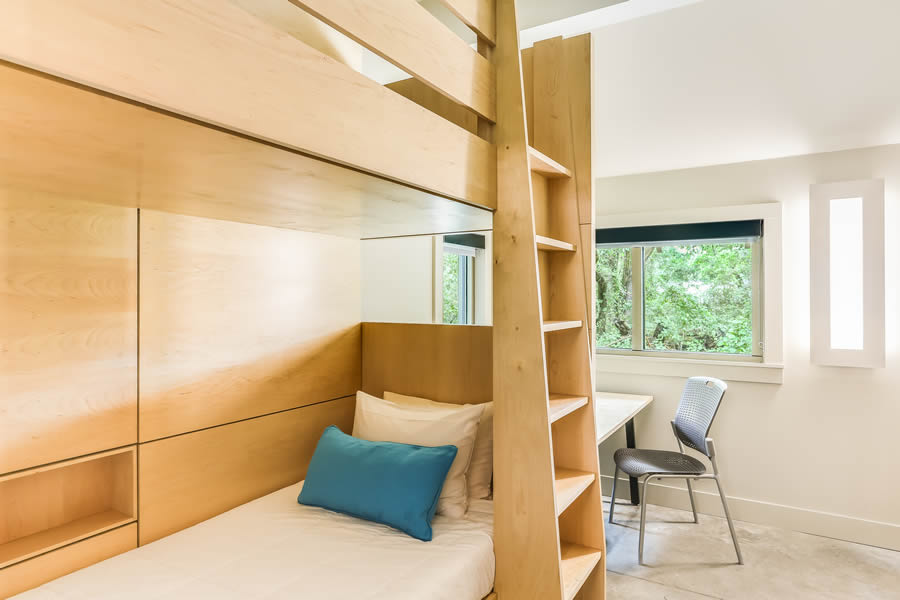
For educational groups, faith-based retreats, or corporate gatherings, the Bunkhouse on the Learning Campus provides comfortable sleeping quarters for guests. The Bunkhouse common building features inviting sitting areas indoors as well as a screened-in porch. Groups can organize, relax, and plan their Gulf State Park activities at ease.
Additionally, the Bunkhouse has two sleeping cabins capable of housing up to 64 people. Each sleeping cabin is comprised of 32 beds (16 bunk beds), in addition to four individual bathrooms and four individual showers.
There is also a residential kitchen and dining area, so groups may prepare snacks or meals within their living quarters. The Bunkhouse provides convenient amenities, so visiting groups can meet, sleep, and eat comfortably while still staying on the park grounds.
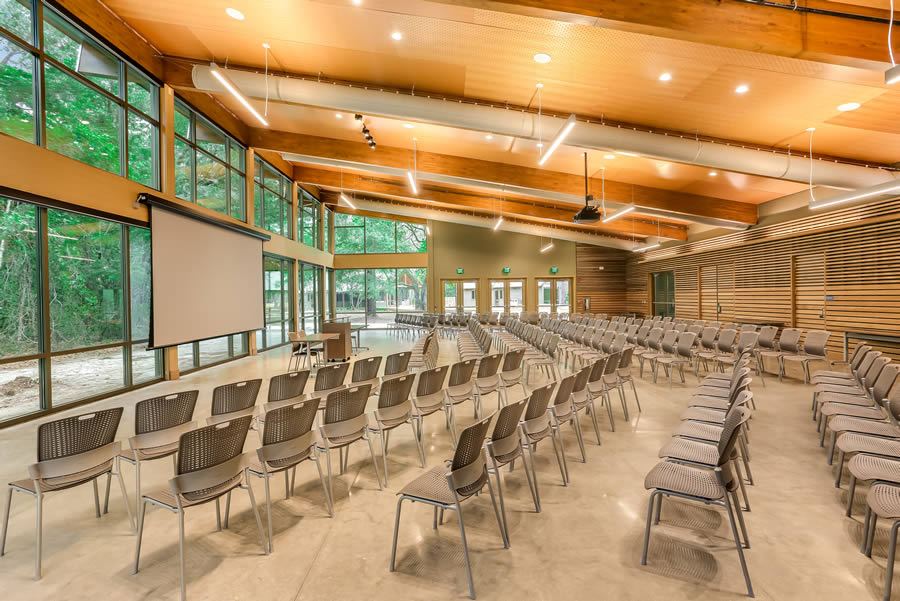
Conservation Hall is a marvel of modern construction. Expansive glass walls surround the hall for open visibility of the mature forest setting. The property is LEED-certified (Leadership in Energy and Environmental Design) and engineered for energy efficiency and minimal environmental impact.
The stunning glass walls within Conservation Hall invite nature to join the meeting in this vast space framed with beautiful natural wood slat-walls and polished wooden beams finishing the inclined ceiling. An installed overhead projector and 10’x10’ screen, and 4 mounted speakers support your audio & visual presentations for up to 200 people. There is also an open foyer, hydration station, and restrooms to accommodate large groups.
The hall is perfect for your next educational programs and group events!
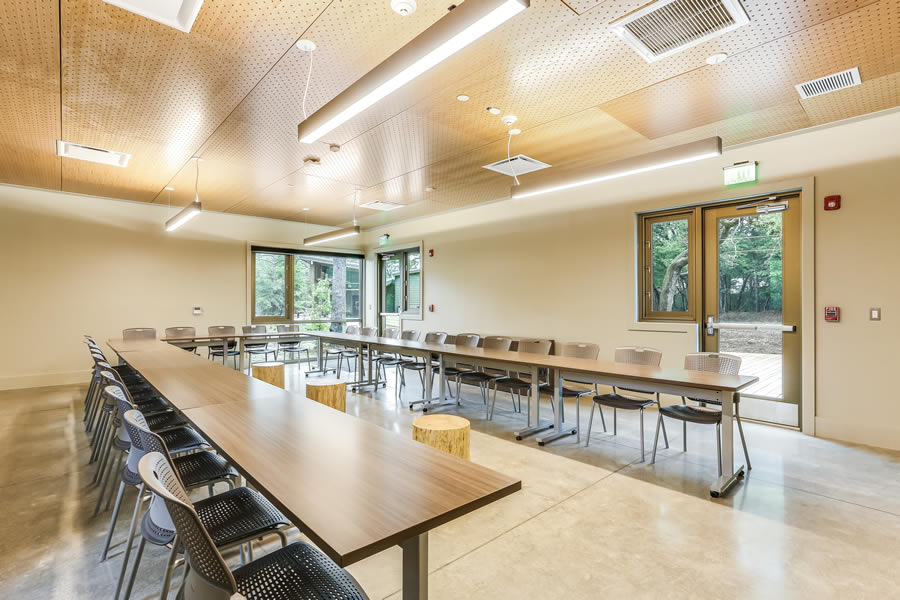
This meeting space is ideal for gatherings for up to 24 people. The windows allow for natural light, and a connected office/snack prep area provides for an efficient workspace. Restrooms are included to create an all-encompassing space for the meeting attendees.
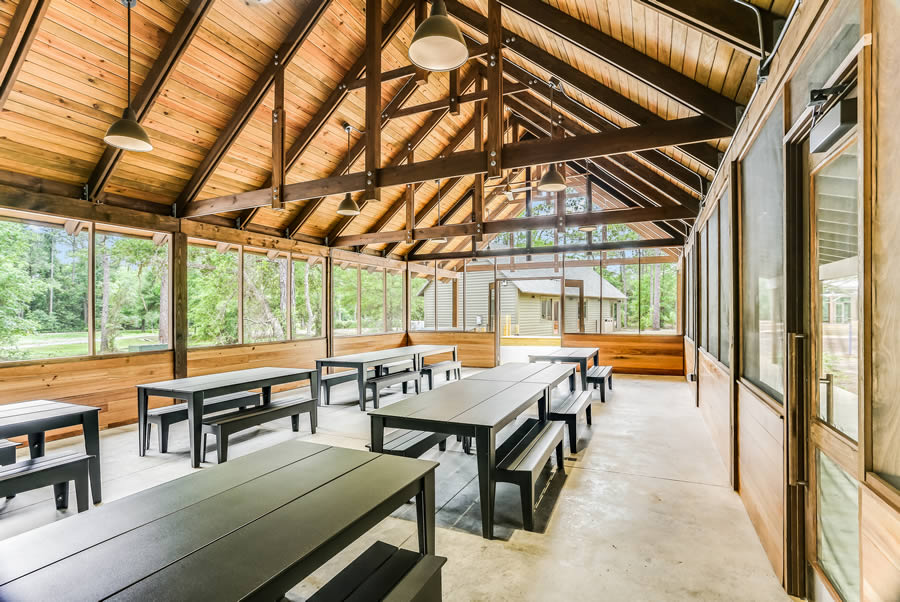
A screened porch with vaulted ceilings, large accent lights, fans, and eight commercial picnic tables made from recycled material creates a rustic feel for this indoor meeting space accommodating up to 48 adults. A single solid wall provides a backdrop for presentations.
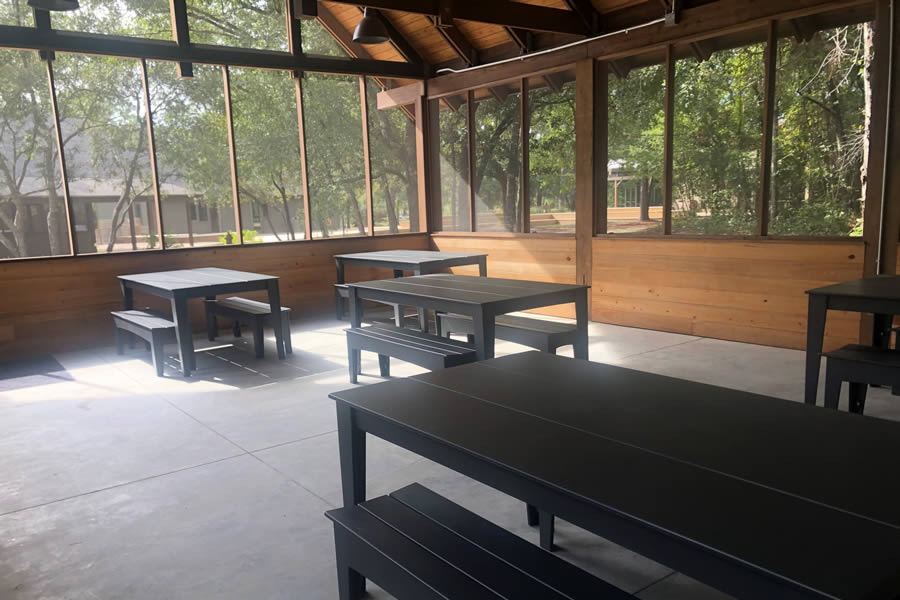
This four-sided screened porch offers the most natural setting with large accent lights, fans, and five commercial picnic tables made from recycled material accommodating up to 30 adults.
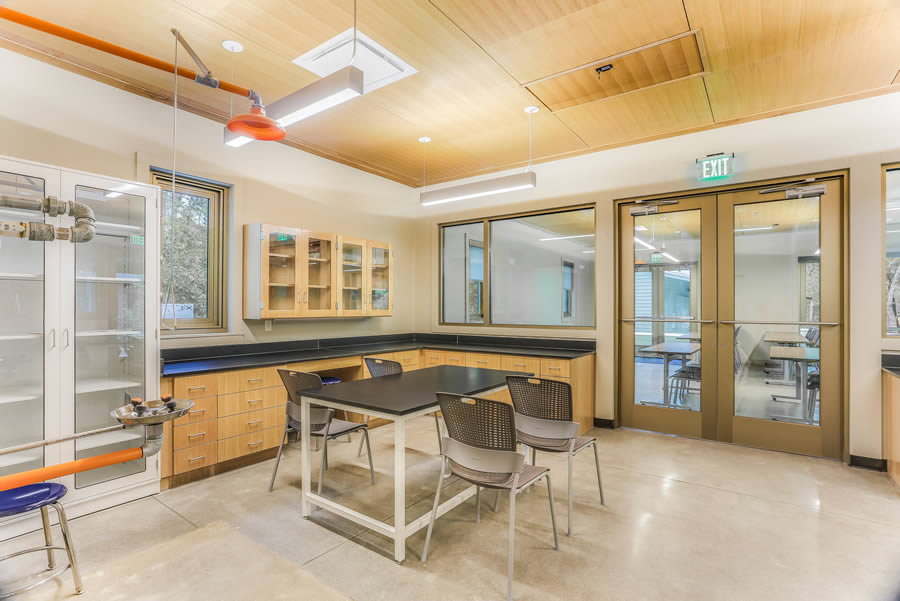
An air-conditioned classroom seating up to 18 allows students to interact with the educator as well as hands-on, immersive learning in the adjoining laboratory. The lab includes technical equipment such as a chemical fume hood, an emergency shower, and eyewash stations, as well as stainless sink and science tables. Connected to the indoor lab area is a covered outdoor double-sink station. This unique and encompassing classroom and lab environment takes learning to a higher level.
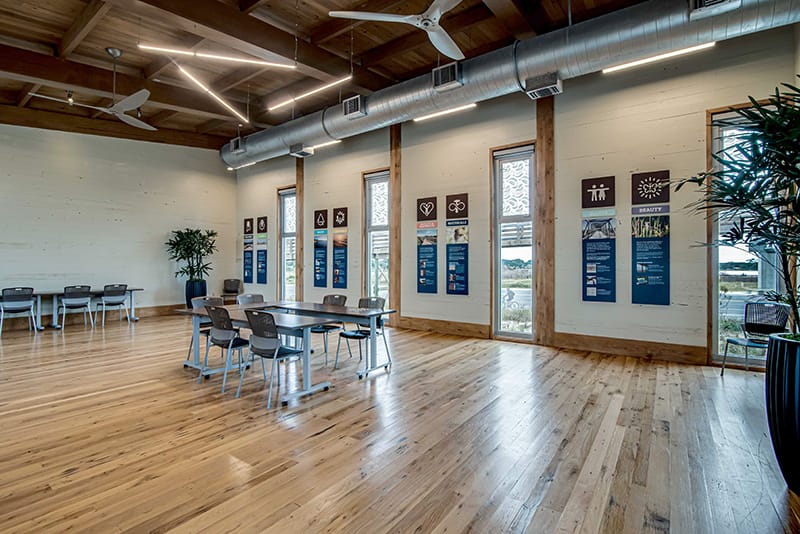
The Beachfront Classroom is located inside the Interpretive Center, Alabama’s most environmentally-friendly building, which is situated adjacent to the Gulf State Park Beach Pavilion on the white sand beaches of the Gulf Coast. The classroom offers natural wood floors and ceiling, a climate controlled environment or fresh coastal breezes through open windows. The flexible space accommodates classroom setup for up to 24 and general gatherings for up to 50 persons.
To learn more about the Interpretive Center, a uniquely designed building that gives more than it takes, select the Interpretive Center tab above.
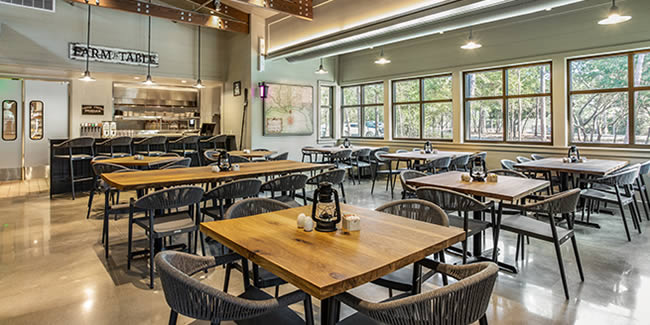
Woodside Restaurant, located steps away from the Learning Campus, provides a friendly and casual dining experience. Your group can enjoy an air-conditioned dining room, screened porch, or dine beneath the pines at one of the picnic tables on the deck. If you want to stay on campus or hit the trails to explore the park or beach, picnic meals can be arranged to go.
The restaurant is open daily for breakfast, lunch, and dinner. Dogs are allowed in our pet-friendly outdoor seating. Food, beer, and wine are available for visitors to enjoy. View the Woodside Restaurant menu to see the variety of delicious cuisine the facility has to offer.
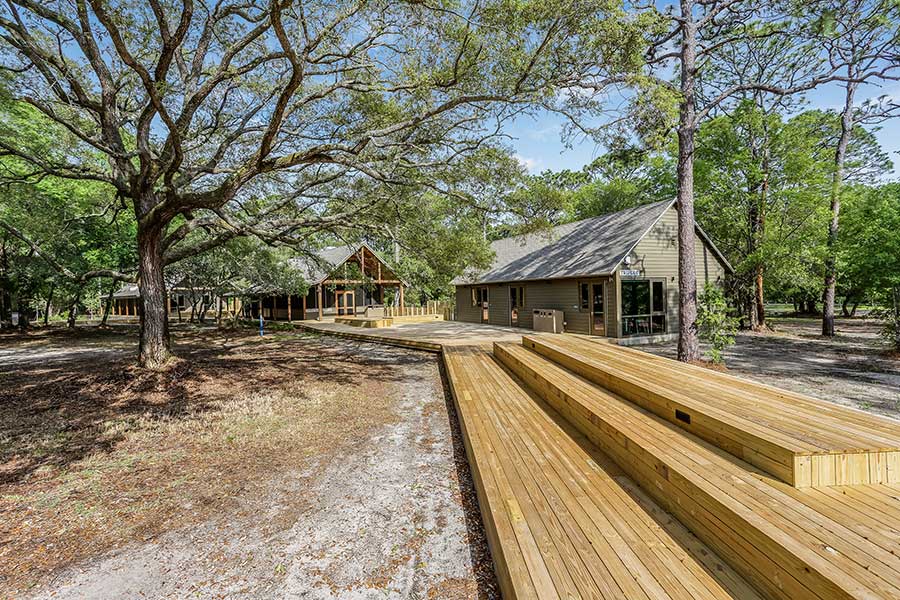
Lodging
– The Bunkhouse
– The Roost
– The Rookery
Classrooms
– Conservation Hall
– Loblolly Classroom & Lab
– Longleaf Porch
– Sweetbay Porch
– Triple C Meeting Room
Dining
– Woodside Restaurant
